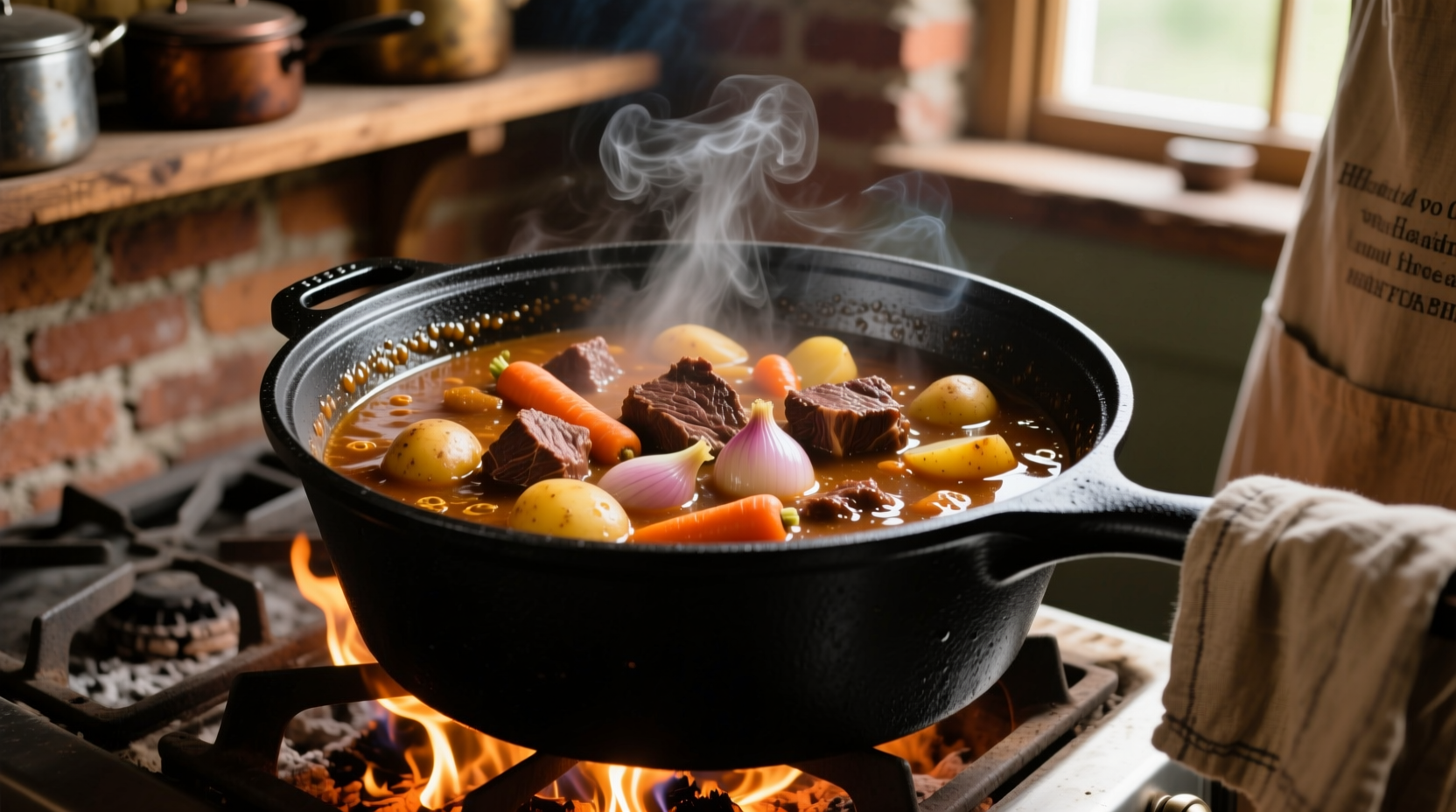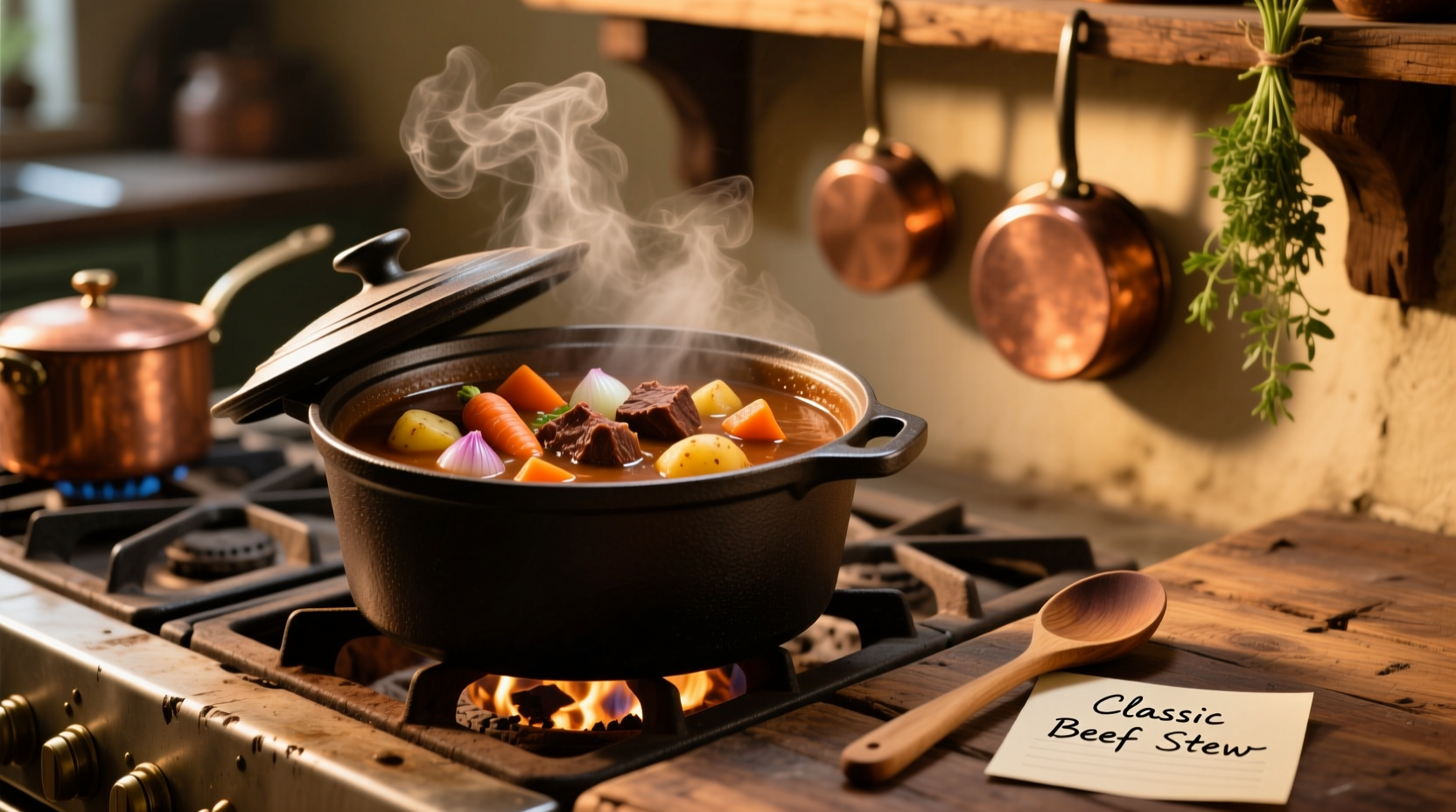Understanding Stew Cooking Time Variables
When you search how long to cook stew, you're likely standing in your kitchen with ingredients ready, needing precise timing guidance. The universal answer isn't simple because stew cooking time depends on several critical factors that determine both food safety and culinary quality.
Professional chefs at the Culinary Institute of America emphasize that collagen breakdown is the scientific principle governing stew cooking times. Tougher cuts like chuck or brisket contain abundant collagen that transforms into gelatin between 160-205°F (71-96°C), requiring 1.5-3 hours of sustained simmering. Leaner cuts like round may become dry if cooked beyond 90 minutes.

Stew Cooking Methods Compared
Your chosen cooking method dramatically impacts required time. Here's how different approaches affect your stew's cooking duration:
| Cooking Method | Typical Time Range | Best For | Key Consideration |
|---|---|---|---|
| Traditional Stovetop | 2-3 hours | Beef, lamb, venison | Maintain gentle simmer (180-205°F) |
| Slow Cooker | 6-8 hours (low) / 3-4 hours (high) | Weeknight meals | Add vegetables in last 2 hours |
| Pressure Cooker | 35-45 minutes | Time-pressed cooks | Natural release for 15 minutes |
| Oven Braising | 2.5-3.5 hours | Large batches | 300°F (150°C) consistent temp |
Science-Backed Timing Guidelines
According to USDA Food Safety guidelines, stew meat must reach a minimum internal temperature of 145°F (63°C) with a 3-minute rest for safety. However, achieving true tenderness requires sustained temperatures that break down connective tissues.
The American Meat Science Association confirms that collagen conversion begins at 160°F (71°C) but accelerates significantly between 180-205°F (82-96°C). This explains why boiling your stew (212°F/100°C) actually makes meat tougher - the rapid temperature causes proteins to seize before collagen converts.
Step-by-Step Timing Process
Follow this professional chef-recommended sequence for perfect stew every time:
- Prep phase (20-30 min): Brown meat in batches (critical for flavor development)
- Initial simmer (30 min): Bring to gentle simmer, skim foam
- Active cooking: Maintain 180-205°F (82-96°C) for:
- Beef/lamb: 2-2.5 hours
- Poultry: 1-1.5 hours
- Vegetable-based: 45-60 minutes
- Vegetable addition: Add root vegetables in last 45 minutes
- Resting (15-20 min): Critical for flavor integration
Doneness Testing Methods
Don't rely solely on timing - use these professional techniques to verify perfect doneness:
- Fork test: Meat should pull apart with gentle pressure, not fall apart completely
- Sauce consistency: Should coat the back of a spoon (nappe stage)
- Internal temperature: 195-205°F (90-96°C) for maximum tenderness
- Taste test: Flavors should be fully integrated, no raw meat taste
Troubleshooting Common Timing Issues
Even experienced cooks encounter timing challenges. Here's how to fix common problems:
Undercooked Stew
If meat remains tough after recommended time, continue simmering in 15-minute increments. Add ¼ cup liquid if sauce has reduced too much. The Serious Eats test kitchen confirms that acidic ingredients like tomatoes can slow collagen breakdown, requiring additional cooking time.
Overcooked Stew
When meat becomes dry or disintegrates:
- Rescue sauce with beurre manié (equal parts butter/flour)
- Add fresh meat pieces and simmer 30 minutes
- For vegetable stews, blend excess to improve texture
Special Considerations for Different Stews
Certain stew varieties require unique timing approaches:
- Beef bourguignon: 2.5-3 hours with wine-based liquid
- Chicken stew: 60-90 minutes max to prevent dryness
- Vegetable minestrone: 45 minutes to maintain texture
- Lamb tagine: 2-2.5 hours with preserved lemon addition late in cooking
Expert Timing Tips
Professional chefs from America's Test Kitchen recommend these advanced techniques:
- Cool stews overnight - flavors improve significantly after 24 hours
- Use a thermometer to maintain precise simmer temperature
- Add delicate herbs (parsley, cilantro) in the last 10 minutes
- For pressure cooking, reduce stovetop time by 65-70%
Frequently Asked Questions
Can I cook stew for 4 hours?
Yes, but only for tougher cuts like chuck or brisket. Most beef stews reach optimal tenderness at 2.5-3 hours. Cooking beyond 3.5 hours may cause meat to disintegrate while vegetables turn to mush. Chicken stews should never exceed 90 minutes to prevent dryness.
Why is my stew meat still tough after 3 hours?
This typically happens when stew boils instead of simmers. Boiling causes proteins to seize before collagen converts to gelatin. Check your temperature - it should maintain 180-205°F (82-96°C), not a rolling boil. Acidic ingredients like tomatoes can also slow collagen breakdown, requiring additional cooking time.
How long should I simmer stew before serving?
After cooking, let stew rest for 15-20 minutes off heat. This allows flavors to integrate and meat fibers to reabsorb juices. For best results, cool completely and refrigerate overnight - the fat solidifies for easy removal and flavors deepen significantly. Reheat gently before serving.
Does stew get more tender the longer it cooks?
Only up to a point. Meat becomes increasingly tender until collagen fully converts (about 3 hours for beef), then begins to dry out and disintegrate. Vegetables overcook much faster - root vegetables become mushy after 2 hours. The ideal window for most beef stews is 2-2.5 hours of active simmering plus 15 minutes resting.











 浙公网安备
33010002000092号
浙公网安备
33010002000092号 浙B2-20120091-4
浙B2-20120091-4